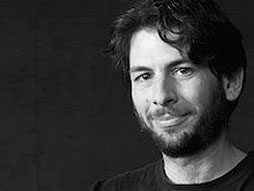Interview with Blaise Aguera y Arcas, The Man Behind Photosynth
 |
On the heels of an announcement regarding Photosynth and NASA working together, I had the opportunity to interview Blaise Aguera y Arcas, the architect behind Photosynth. If you haven't seen the amazing technology in action, watch Blaise's demo - which received a standing ovation - on YouTube. You won't be disappointed. |
Dan Waters: Blaise, thank you for taking the time to answer a few questions about this emerging technology. You really wowed a lot of people with the Photosynth demo and again with the details of PhotoSynth’s collaboration with NASA.
Dan: What is your academic and professional background?
Blaise: My undergrad and graduate work were in physics and applied math. A few years ago I founded Seadragon, a software startup that developed rich visual interaction and user interface technology. Seadragon was acquired by Live Labs a year and a half ago. Other active threads in my life include sporadic work on computational neuroscience in collaboration with my wife, Adrienne Fairhall, and computational research on early typography.
Dan: Can you provide a description of Photosynth for the readers?
Blaise: There's a good explanation online at https://labs.live.com/photosynth/whatis/.
Dan: What was Photosynth before it was a Live Labs project?
Blaise: Photosynth started out as Photo Tourism, a research project by Noah Snavely at the University of Washington. He was co-advised by Steve Seitz at UW and Rick Szeliski at Microsoft Research. Photosynth incorporates Seadragon’s multiresolution architecture, allowing it to scale up, and has a great deal of new work in the back end to synthesize environments efficiently. There were a lot of great ideas in Noah’s original work, though, some of which still haven’t made it into Photosynth.
Dan: How did your work at the University of Washington lead to your involvement with this technology?
Blaise: Actually the work was first brought to my attention by Patrice Simard, our Live Labs head of Research, shortly after the Seadragon acquisition. I already knew some of the people involved on the UW side, though. It’s a real pleasure for me to still feel strongly connected to the academic world through the work we’re doing here. Live Labs is highly collaborative. We invest strongly in both engineering and research, and on the research side we work closely with both Microsoft Research and a number of universities.
Dan: Do you see any practical applications for Photosynth in the academic / research world?
Blaise: Yes, quite a few! [I prodded Blaise to elaborate a bit on this one ;) ]
Dan: Can you tell me what a Gutenberg Bible is and how it relates to your area of research?
Blaise: The Gutenberg Bible, or B-42 (for '42 lines') was among the first printed books in the West (though not quite, as many believe, the first). The Wikipedia entry on Johannes Gutenberg is pretty good, and succinctly summarizes our contribution (my collaborator, Paul Needham, is the Scheide Librarian at Princeton).
Dan: Does Photosynth utilize any relatively new Microsoft / Live Labs technology, such as Silverlight, WPF or Deepfish?
Blaise: No, not at the moment.
Dan: How did the relationship with NASA come about?
Blaise: That would be a better question for Adam Sheppard.
Adam Sheppard (Group Product Manager, Microsoft): NASA originally contacted us shortly after we announced the availability of the Photosynth Technology Preview back in October 2006 at the Web 2.0 conference. We worked with them on some test data sets for the Mars Rover, Space Station and Shuttle programs which all yielded some very promising results. Since that time we’ve continued to explore how the technology could be used both operationally and for public outreach, such as the recent collections from Kennedy Space Center.
Dan: What's it been like to work with the NASA team?
Adam: It’s been a real honor and a privilege to work with the scientists and engineers at NASA. We find them dedicated, driven and passionate about their work and I think that this of sense of purpose shares a lot of parallels with the people at Microsoft.
I definitely want to thank Blaise and Adam for taking the time out of their busy schedules to answer these questions and reveal some of the background behind Photosynth!
Comments
Anonymous
August 07, 2007
PingBack from http://msdnrss.thecoderblogs.com/2007/08/08/interview-with-blaise-aguera-y-arcas-the-man-behind-photosynth/Anonymous
August 07, 2007
On the heels of an announcement regarding Photosynth and NASA working together, I had the opportunityAnonymous
August 08, 2007
Here is a link to an article about Blaise's Gutenberg work...: http://www.open2.net/home/view?entityID=15599&jsp=themed_learning%2Fexpanding_viewer&sessionID=-1161756493749&entityName=objectAnonymous
August 10, 2007
Great job Dan! This is one of the best blogs entries ever! You are the best!Anonymous
December 04, 2009
Suggestion about the Gutenberg technic: ( Saw program History chanel 2009-12-05 ) Letters created, more than one tool/letter, the way Paul and Blaise suggests. In this way mould of complete page created. Reason this casting no longer exist might be material reused at discovery of a better technic. Paul and Blaise suggestion "Their working hypothesis on how Gutenberg created type is that a temporary mould was created, one letter cast and the process of taking the letter out of the mould disturbed the surface. So the same mould would have had to be recreated to make the second letter."